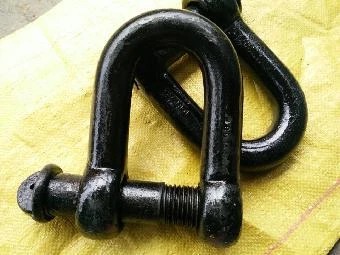News
Dec . 29, 2024 20:08 Back to list
galv turnbuckle
Understanding Galvanized Turnbuckles Functions, Benefits, and Applications
Turnbuckles are essential hardware used in various applications to adjust the tension of cables, ropes, or rods. They provide a simple and effective means of tensioning and aligning loads, making them invaluable in construction, rigging, and many other fields. Among the various types of turnbuckles, galvanized turnbuckles stand out due to their durability and resistance to corrosion.
What is a Galvanized Turnbuckle?
A turnbuckle typically consists of two threaded eyebolts and a central body that can be twisted to either increase or decrease the distance between the eyebolts. The unique feature of galvanized turnbuckles is their protective coating. Galvanization involves applying a layer of zinc to the metal surface, which creates a barrier, shielding the underlying material from moisture and environmental factors that can lead to rust and corrosion.
Benefits of Galvanized Turnbuckles
1. Corrosion Resistance One of the most significant advantages of galvanized turnbuckles is their resistance to corrosion. This feature makes them suitable for outdoor applications or in environments exposed to moisture, such as marine settings or areas with high humidity. With galvanized steel, the lifespan of the turnbuckle is extended significantly, reducing the need for frequent replacements.
2. Strength and Durability Galvanized steel is known for its strength. This makes galvanized turnbuckles capable of handling substantial loads without deforming or failing. The combination of high tensile strength and resistance to wear ensures that these components maintain their functionality even under challenging conditions.
3. Ease of Use Turnbuckles are designed for ease of operation. The simple mechanism allows for quick adjustments to tension, making them ideal for both temporary and permanent installations. Users can easily fine-tune the tightness of cables, ensuring optimal performance in various applications.
galv turnbuckle

4. Versatility Galvanized turnbuckles come in various sizes and designs, making them suitable for a wide range of applications. From tensioning cables in construction projects to securing tents and canopies, these hardware components are versatile enough to cater to different requirements.
Applications of Galvanized Turnbuckles
1. Construction In the construction industry, galvanized turnbuckles are used to tighten and stabilize structures. They are often found in scaffolding, providing support and stability during the building process. Additionally, they are used for cable bracing in buildings and bridges to help distribute loads evenly.
2. Marine Applications Due to their corrosion-resistant properties, galvanized turnbuckles are favored in marine environments. They are commonly used in boat rigging systems, securing sails and supporting various components of sailing vessels.
3. Fencing and Agriculture Farmers and ranchers use galvanized turnbuckles to tighten fencing wires, ensuring that livestock are contained within their enclosures. Their ability to withstand harsh outdoor conditions makes them ideal for use in agricultural settings.
4. Tensioning Systems In various industrial applications, galvanized turnbuckles serve as crucial components in tensioning systems, such as those used in cranes, lifts, and other heavy machinery. Their reliable performance ensures safe and efficient operations.
Conclusion
Galvanized turnbuckles are indispensable hardware that offer a blend of strength, durability, and versatility. Their corrosion-resistant properties make them suitable for a myriad of applications, from construction to marine settings. As industries continue to evolve, the demand for robust and reliable fastening solutions like galvanized turnbuckles will only increase. Understanding their functions and benefits is critical for professionals who rely on these components for ensuring safety and efficiency in their projects. Whether you are a contractor, an agricultural worker, or someone involved in marine activities, investing in quality galvanized turnbuckles can lead to improved performance and longevity in your operations.
